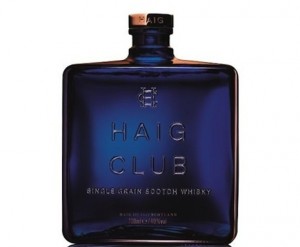
I can completely understand the temptation for brand owners to borrow packaging architecture from another category, but I believe Diageo decanting whisky into an aftershave bottle – and licensing David Beckham branding to try to make Whisky “cool and trendy” for a new generation – betrays a triumph of opportunism over consideration, which can only destroy brand value.
Putting aside whether it’s a good idea for children to see their dad pouring out a drink from an aftershave bottle (while their mum dabs a bit of Dior “Poison” behind her ears), Haig is one of the oldest and best known Scotch whisky brands in the world with one of the most recognisable bottle shapes in its Haig Dimple.
Diageo owns an enormous portfolio of Whisky brands, and it is certainly tough to balance the need for innovation, consumer acquisition, and the responsibility to preserve its brands’ heritage and authenticity for the next generation. Haig has always been a very accessible, easy-to-drink whisky so this Single Grain variant makes a good choice to target new drinkers.
In this case however, the company appears to have abandoned hard earned brand equity in the hope of a quick win. This new bastard son of Haig goes far beyond “pricking the pomposity” of the old school and “having a bit of fun” by associating with those well known brand gurus David Beckham and Simon Fuller. Beckham of course is famous for being happy to put his name to brands – from underwear to phones to hair-gel – whether relevant or not.
The one bit of good news though is they may get some extra PR – as a new generation try to emulate England Rugby’s Colin Smart and his infamous 1982 after-shave-drinking episode.
Chris Collis is a CIM Chartered Marketer and Director of Marketing Walk Ltd

 Its very easy for politicians to go for a one-line sound-bite from a 140 page report and scapegoat manufacturers and advertisers; but the problems of obese-cider-swilling-teenage-neer-do-wells congregating on street corners is a much deeper societal issue than can be solved by a bit of tinkering with advertising regulation. The Health Committee itself recommends that the top issues to be addressed are over-availability and minimum pricing; with some tightening of the scope and process of existing marketing regulation, particularly around sports sponsorship.
Its very easy for politicians to go for a one-line sound-bite from a 140 page report and scapegoat manufacturers and advertisers; but the problems of obese-cider-swilling-teenage-neer-do-wells congregating on street corners is a much deeper societal issue than can be solved by a bit of tinkering with advertising regulation. The Health Committee itself recommends that the top issues to be addressed are over-availability and minimum pricing; with some tightening of the scope and process of existing marketing regulation, particularly around sports sponsorship.